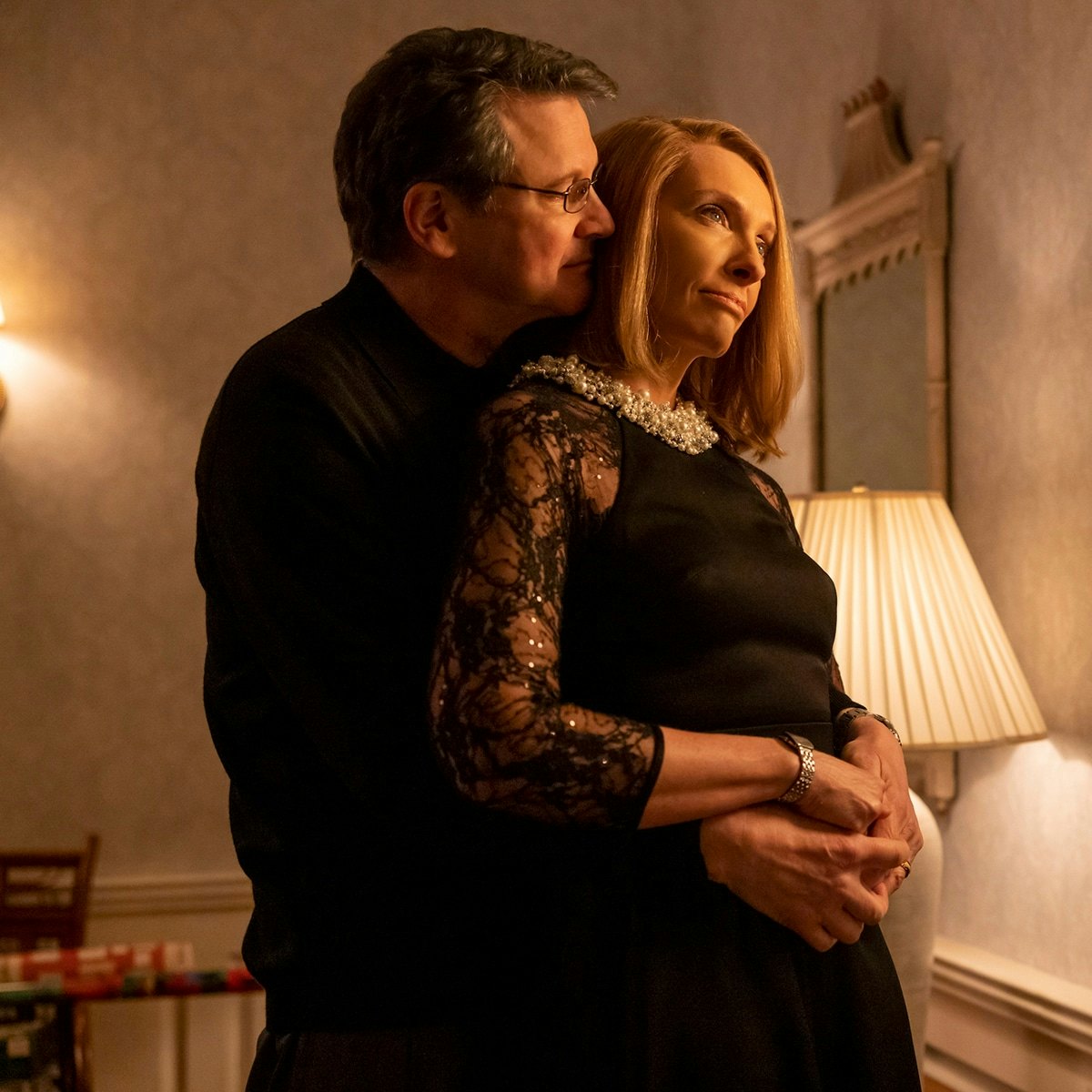
In the true crime world, few documentaries have had the impact of The Staircase. The 2004 series follows the case of Michael Peterson, an American author whose wife was found dead. While Peterson claimed her death resulted from a fall down a flight of stairs, he was eventually found guilty of her murder.
The case was a thorny one filled with numerous twists and turns, and to this day, true crime fans are bitterly divided in their theories about what really happened to Kathleen.
HBO Max has now adapted the story into a drama series starring Colin Firth and Toni Collette, adding a new layer to the tale. Not only does the show follow the Peterson family, but it also follows the making of the documentary itself, leading viewers to reassess just how much truth any documentary can really give us. As director Antonio Campos told Hollywood Life, “Our intent was to explore the real elusive nature of truth and how ultimately the truth gets kind of caught up in storytelling, and everyone trying to tell their version of the story.”
But even if truth is — as HBO Max’s The Staircase suggests — ultimately unknowable, there are still a few aspects of the drama that we know aren’t accurate. Here’s a guide to what’s fact and fiction in HBO Max’s The Staircase. Major spoilers ahead.
What does The Staircase get right about Kathleen Peterson?
In the original documentary, Kathleen Peterson was, as Campos put it, a “big void.” He also said that “Anybody who watched the case, you want to understand who this person was, and what their life was like before they died.”
We certainly get plenty of insight into Peterson’s life in the new drama. We see her balancing her precarious job in information services at Nortel Networks, her role as a mother of five, and other personal snippets that hint at her exhaustion and slight dissatisfaction with life.
According to The News & Observer, the basic facts are mostly correct. Kathleen grew up in Pennsylvania with her two sisters and brother and studied engineering at Duke University. Before meeting Michael, she was married to Fred Atwater, with whom she had one daughter, Caitlin. And Kathleen indeed worked at the rapidly dissolving Nortel before her death on December 9, 2001.
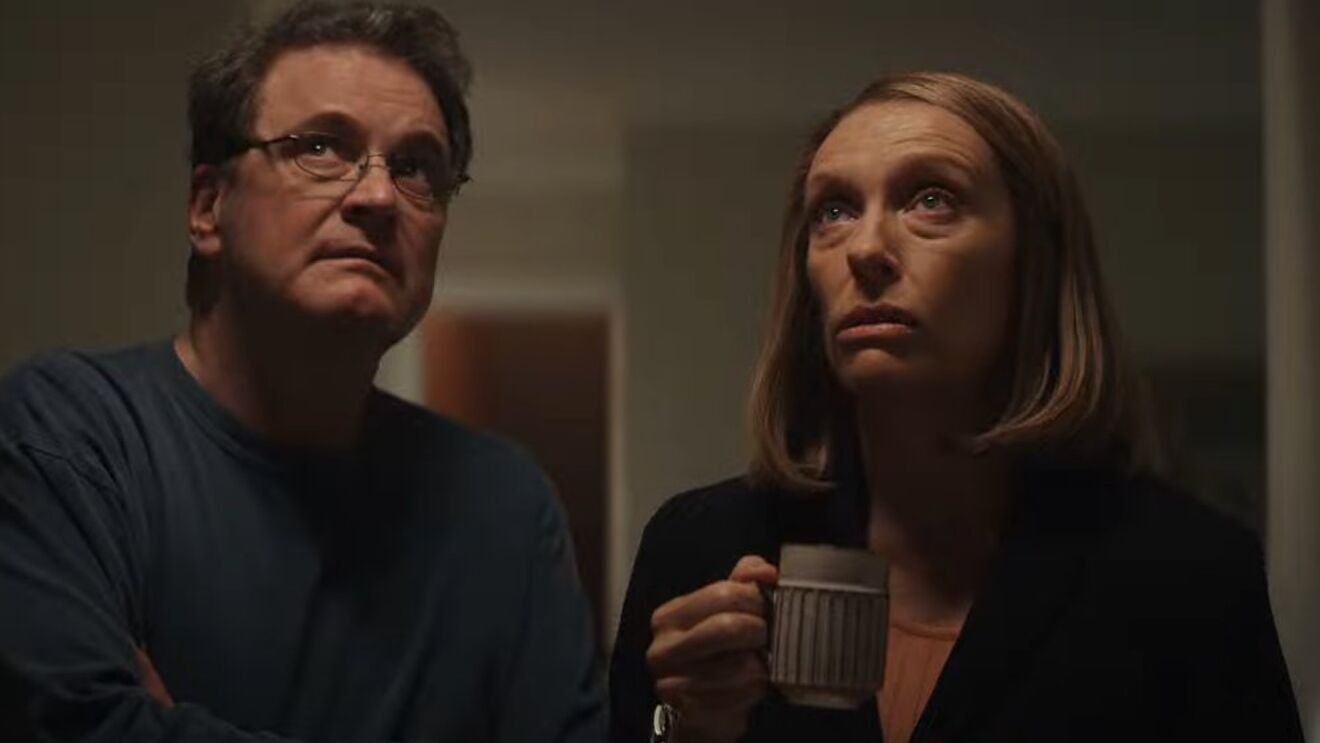
But there are some details in the show that we may never know the truth about, such as Kathleen’s episode with the bats in the attic or her accident in the pond during a party. Did these things really happen? While these events may be partially true, we simply don’t know how accurate the show’s depiction of them is.
As Campos explained, the version of Kathleen we see in the HBO Max series is an approximation — a guess based on what could have happened in the lead up to her death. “We have to create a story that could lead to any one version of these deaths,” he said.
How accurate is The Staircase’s trial?
Most of the trial that we’re shown in The Staircase is accurate. After all, the entire trial was filmed, and much of it appeared in the documentary.
It’s true that Michael had a column in the Herald Sun where he often lamented the state of local police. It’s also true that he was convinced his column resulted in a “witch hunt” after Kathleen’s death. It’s even true that the D.A. likely convinced the medical examiner to cite the cause of Kathleen’s death as “blunt force trauma.”
Michael’s attorney, David Rudolf, spoke to the Charlotte Observer about the new HBO Max show and confirmed that everything from the autopsy photos to the family divide to the escorts and the blow poke theory is mainly true. And yes, Michael had reportedly discovered his adopted daughters’ mother at the bottom of a staircase decades earlier.
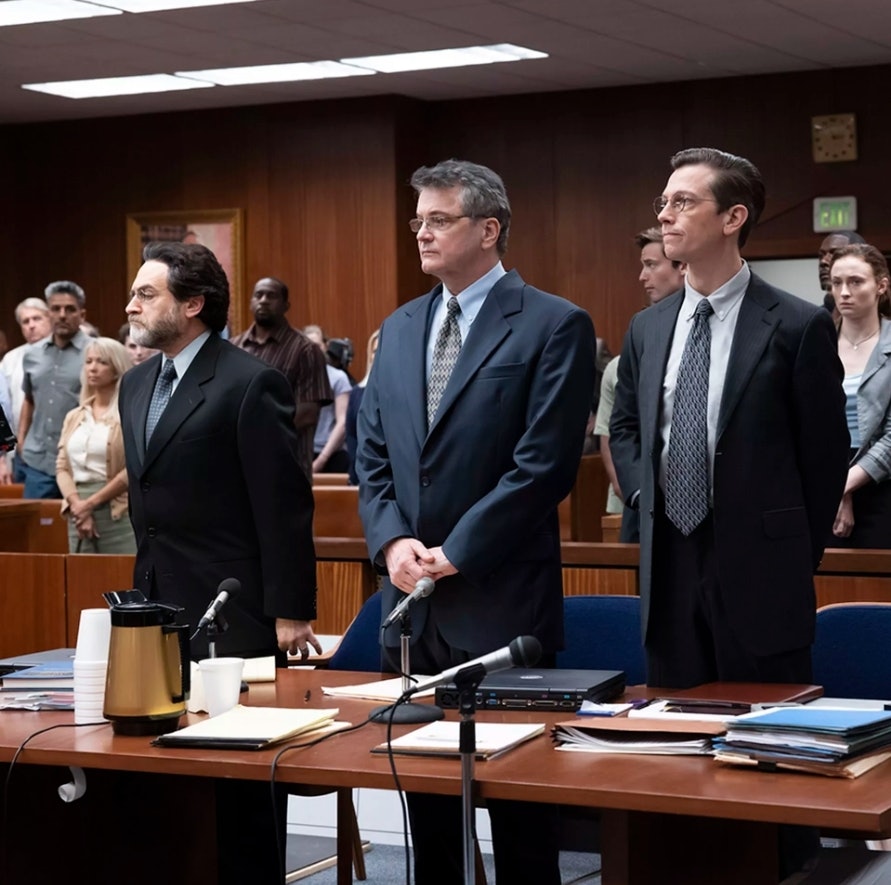
“I think they got a lot right about the tunnel vision that the police and the prosecutors had based on blood at the scene and nothing else,” Rudolf said. “And how that tunnel vision then carried over to the medical examiner; and how the medical examiner’s tunnel vision carried over to the family; and how Candace and (Kathleen’s daughter) Caitlin and Lori ended up turning on Michael, even though from the very start not a single one of them thought that that was even a possibility.”
What did The Staircase change?
While a lot of the trial is accurate, HBO Max chose to leave out a few key details. In real life, an expert testified that Michael had staged the crime scene. Apparently, the police found a bottle of wine and two “neatly arrayed” wine glasses, but Kathleen’s fingerprints weren’t present on them, and she was found to have a low blood alcohol content in her autopsy. This part of the case was omitted.
Other significant omissions include Caitlin’s testimony on the stand and the fact that Rudolf’s wife, Sonya Pfeiffer, was actually a journalist who covered the case. Kathleen’s sister Candace Zamperini accused Pfeiffer of misconduct during her testimony — a fact left out of both the documentary and the drama. She “pretended to be my friend, she came to my home for an exclusive interview,” Zamperini said. “She invited me to dine. She told me she believed my sister had fallen down the staircase. Sonya Pfeiffer had the hubris to come to Maplewood Cemetery without an invitation to hold hands with our family [at Kathleen Peterson’s headstone].”
What did The Staircase get completely wrong?
In addition to a few significant omissions, the show made one major alteration. In the show, the prosecution points out Rudolf during the grand jury hearing.
“I was not in the grand jury, because defense lawyers are not allowed in a grand jury room,” Rudolf told the Charlotte Observer. “Anybody who knows anything about the criminal justice system will look at that scene and say, ‘That’s bulls***.’ So, that’s just stupidity.”
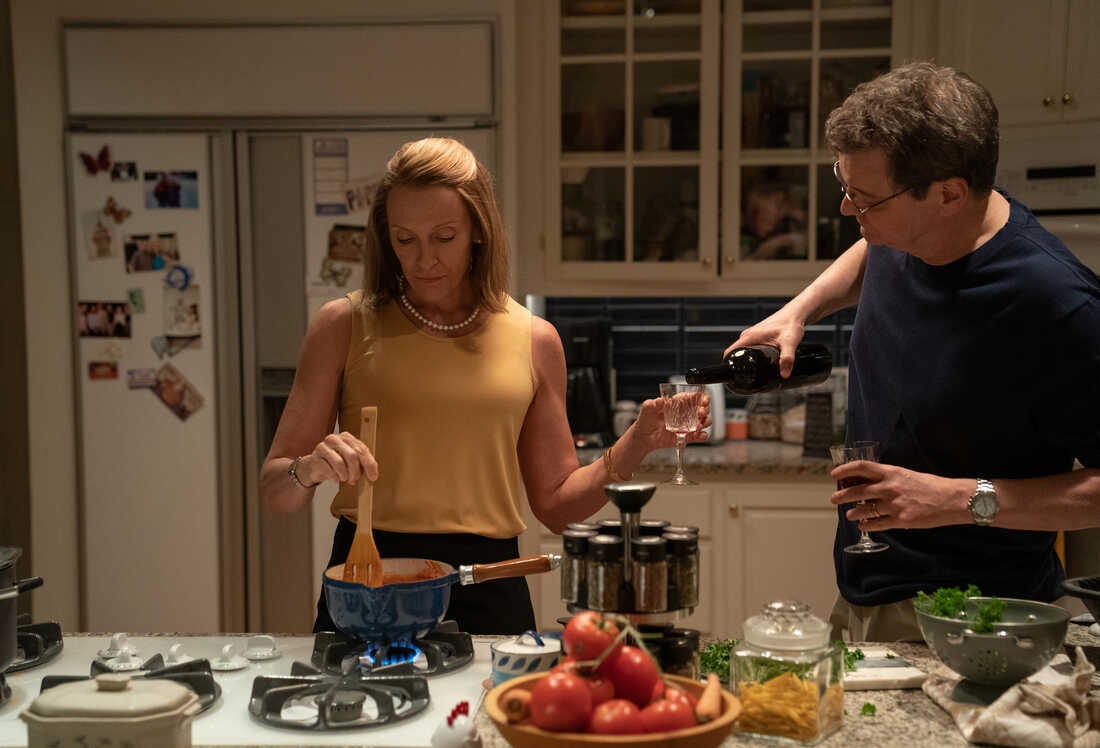
Is The Staircase’s final shocking development really true?
One of the oddest developments in The Staircase may come as a shock to fans of the documentary. It turns out that some time in the future, Michael has a relationship with a French woman who we later learn is Sophie Brunet, one of the documentary’s editors. As documentary director Jean-Xavier de Lestrade told L’Express, Brunet “fell in love” with Peterson.
After Michael begins his time in prison, the adaptation shows him starting a sort of epistolary affair with Sophie Brunet (Juliette Binoche) when she becomes fascinated with him during the editing process. According to a 2008 article in Le Monde, the details about their correspondence and eventual relationship are mainly accurate. As Brunet explained, she concluded that Michael was innocent while working on the project.
In real life, Brunet collapsed when she heard the news that Michael had been found guilty, which made her realize that she had developed feelings for him.
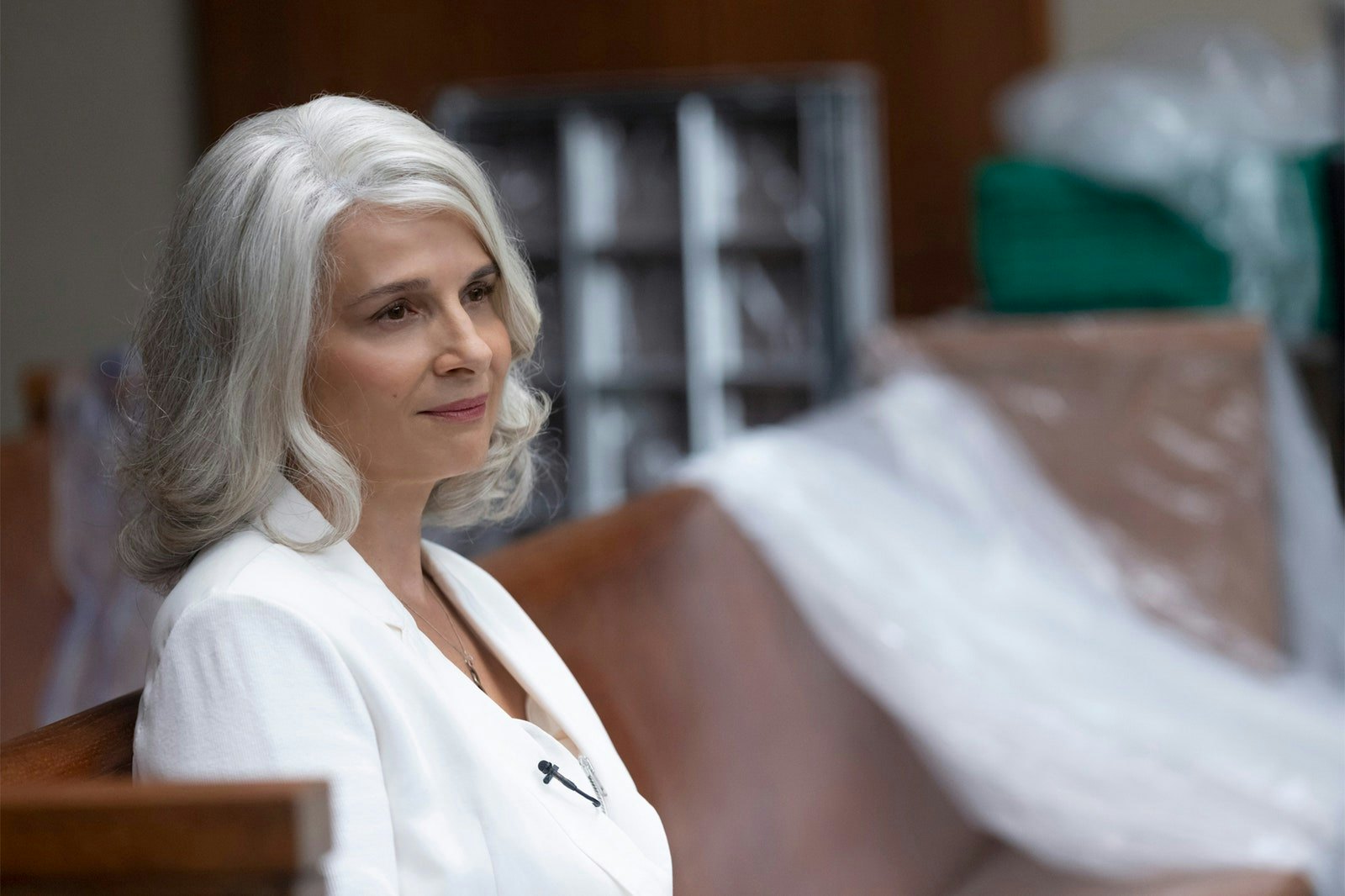
Just like in the show, Brunet sent Michael a copy of In Search of Lost Time and began exchanging letters with him. Eventually, Brunet began visiting Michael in prison every “two to three months” for four years. According to Peterson, the new affair was practically life-changing. The pair ultimately had a romantic relationship that lasted until 2017.
While the new HBO Max show certainly isn’t 100% accurate, it does demonstrate one definite truth: The more we re-examine a case through a new medium, the murkier it all becomes.
The Staircase releases new episodes Thursdays on HBO Max.







